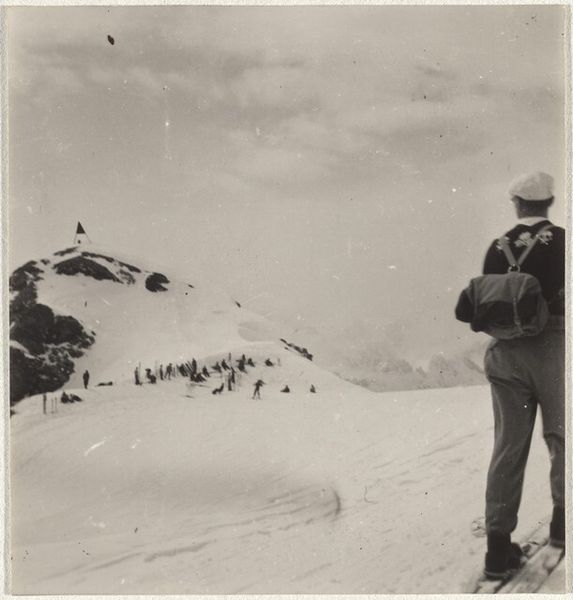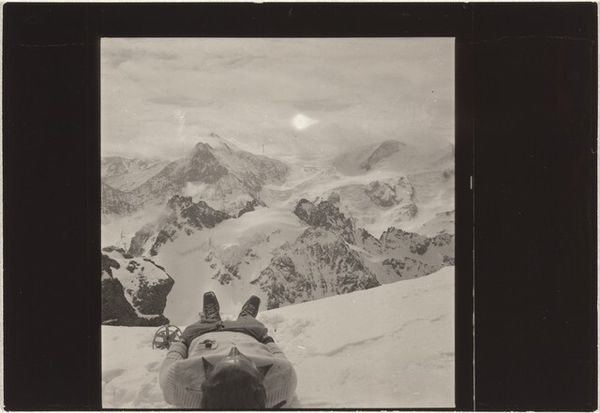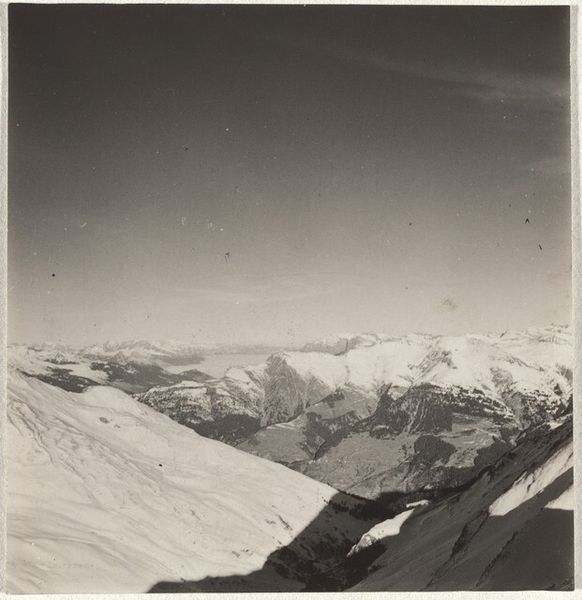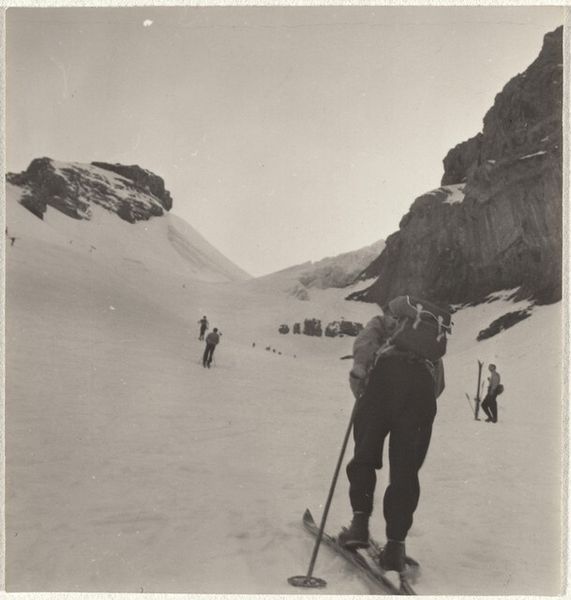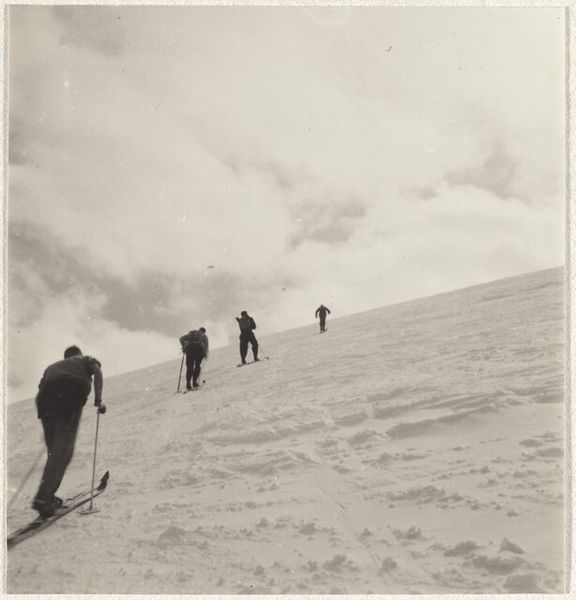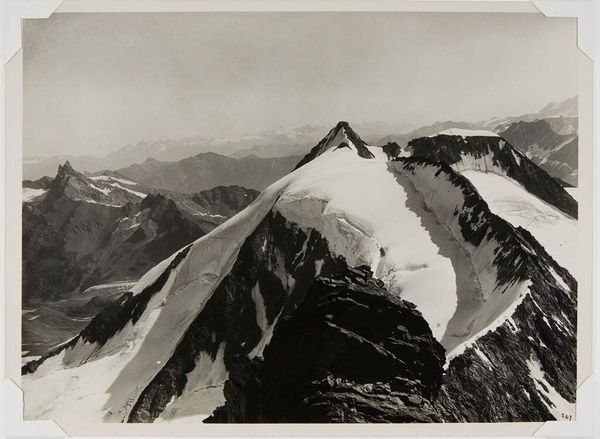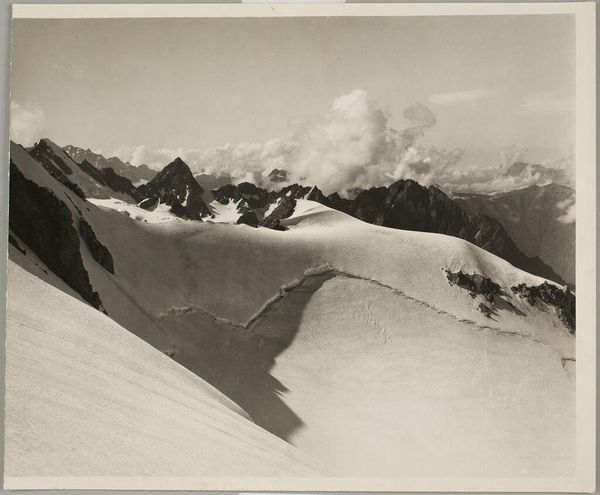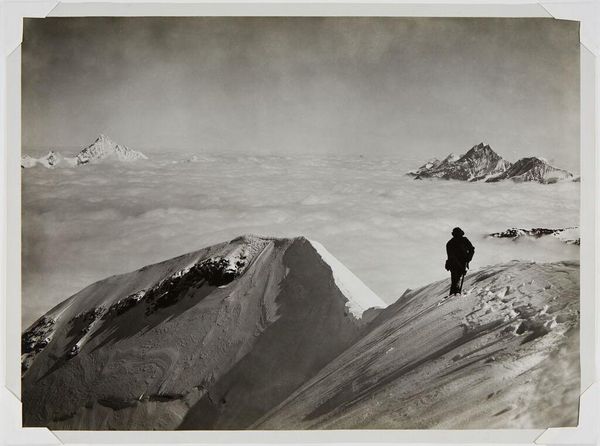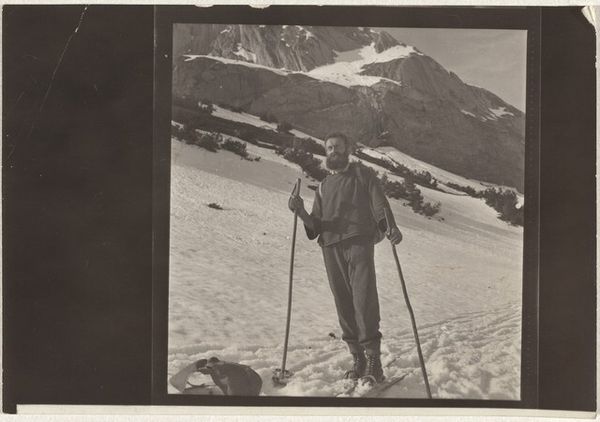
print, photography
#
film photography
# print
#
landscape
#
photography
#
mountain
#
realism
Dimensions: sheet (trimmed to image): 5.9 x 5.5 cm (2 5/16 x 2 3/16 in.)
Copyright: National Gallery of Art: CC0 1.0
Curator: "Climbing near the Dom, Canton of Valais," a 1944 photograph by Robert Frank. It looks like a silver gelatin print. Editor: My first impression is the sheer dominance of the landscape. The small figures are dwarfed, really emphasizing humanity's place against such immense geological forms. Curator: Precisely. The image arrives relatively early in Frank's career, well before his famous work, "The Americans." Though not yet exhibiting his signature raw style, the thematic interest in figures interacting within the landscape is apparent. This piece emerged from a period when Frank returned to Switzerland during the war. Editor: The mountain itself looms large, holding a spiritual significance. Mountain tops across cultures are often seen as sacred, places of enlightenment or divine connection. Do you see that interplay here, in Frank's positioning of the subjects? Curator: The context of 1944 cannot be overlooked. Switzerland maintained neutrality during the Second World War. This image presents a unique commentary in relation to Switzerland’s geographic protection. The Swiss Alps offered natural fortification, therefore landscape became closely connected to ideals of refuge and security during WWII. Editor: Indeed, it creates an interesting juxtaposition. While the war raged elsewhere, here we see a peaceful scene—two figures peacefully contemplating. The mountain then, could be considered a symbolic safehold? Curator: In effect, yes. But Frank adds further commentary, I would suggest. He subtly draws attention to those small human figures within the broad composition. Despite the immense protective strength offered by the landscape, safety is also achieved because of collaborative and community effort. He's emphasizing humanity’s reliance on collective strength. Editor: That human presence, and the composition, really draws me in. The photograph feels surprisingly contemporary, despite its age. The symbolism of their positioning, of that collective experience—it resonates powerfully, especially when we bring in its historical framework. Curator: Absolutely. It gives you much to reflect on concerning both the cultural role and the artist’s socio-political sentiments in 1944.
Comments
No comments
Be the first to comment and join the conversation on the ultimate creative platform.
